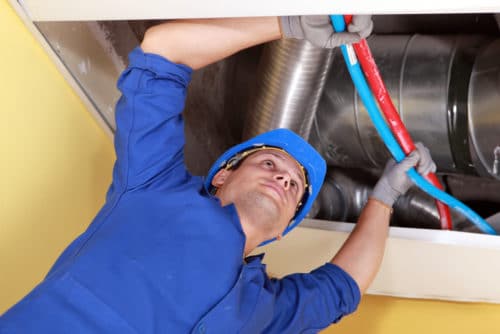Health Benefits in Electrical Conduit for the AEC
If you work in the AEC (Architect, Engineer, Construction) community, chances are you’re familiar with electrical conduit and its role in construction safety and system installation. However, do you know what these cable protection methods can do to your health?
Plastics and metals can be toxic, posing health risks for those constantly exposed to them. The only way to avoid these risks is to choose conduit and fittings that adhere to health and safety standards. Fortunately, manufacturers, such as ANAMET Electrical, developed electrical conduit options that exceed standards while ensuring wiring protection.
Choosing conduit manufactured from low-toxicity materials can ensure the best possible health benefits and safety for yourself and consumers. Learn more about PVC electrical conduits and discover what is deemed safe by the Underwriters’ Laboratories (UL).
Polyvinyl Chloride (PVC) Conduit and Alternatives
Electrical conduits are generally made of metal (galvanized steel, stainless steel, aluminum) or non-metallic materials (plastics). However, plastic materials (such as PVC) are preferred for their affordability and light weight. Many other benefits include:
- Non-conductive
- Resistant to harsh weather conditions
- Durable and corrosion-resistant
- UV (sunlight) resistant
- Oil resistant
- Dust and moisture resistant
- Flexible
Because not all applications allow use of PVC jacketed conduit, ANAMET Electrical developed non-PVC jacket materials. Most PVC electrical conduits can’t withstand temperatures below 20 degrees and above 140 degrees Fahrenheit. Also, if PVC melts or catches fire, it will produce toxic chlorine fumes. It’s why PVC is known as “The Poison Plastic.” Therefore, one shouldn’t use them in applications where they will be exposed to high heat or fire.
Potential health risks of chronic exposure to free Vinyl Chloride:
- Liver damage
- Immune system degradation
- Carcinogenic (cancer causing)
- Damage to the reproductive system
Due to lessons learned from electrical fires and PVC smoke in confined spaces, ANAMET Electrical developed Type ZHUA. This Zero Halogen electrical conduit meets UL requirements and cannot produce chlorine fumes.
Why is UL Certification Critical in PVC Electrical Conduit?
Meeting the requirements of UL is imperative, as it reassures consumers that a product isn’t a danger to its users. Since PVC plastics are known to be toxic, choosing an electrical conduit that guarantees safety and quality is paramount. One way is choosing a UL 360 PVC electrical conduit, the standard for liquid-tight, flexible metal conduit.
Other benefits of UL Certification:
- High standards: UL marks mean the products meet UL’s high level of standards for performance.
- Safety: Severe testing ensures a product is safe and isn’t likely to cause accidents.
- Value: Owners and manufacturers are more inclined to invest in UL-approved products due to inspection and enforcement of product standards.
- Insurance: Local code inspectors look for the UL mark to verify quality and safety standards are met so that construction may be approved for insurance purposes.
- Assurance: Consumers confidently buy UL-recognized products since breakdowns or repairs caused by low-quality and poor performance won’t be an issue.
The Importance of Meeting Regulatory Standards
ANAMET Electrical has developed dozens of Sealtite® Liquid Tight Flexible Conduit Listed by Underwriters’ Laboratories (UL). ANAMET Electrical delivers a variety of both UL-listed and non-listed ANACONDA SEALTITE® electrical conduit conforming to the following standards:
- California Proposition 65
- NSF (National Sanitation Foundation) listing (Type FGUA)
- FDA (Food and Drug Administration) regulations
- CFR 21 (rules of the FDA)
- EPA Toxic Substances Control Act (TSCA) Compliance
- REACH SVHC (Substances of Very High Concern) Compliance
- RoHS3 (Restrictions on Hazardous Substances) Compliance
The UL has developed various standards in conformance with the National Electrical Code (NEC), published by the National Fire Prevention Association (NFPA). Products with a UL mark signify that the product has undergone rigorous testing. Fortunately, UL-listed Anaconda Sealtite® conduit received certifications due to meeting these standards.
Choose an Electrical Conduit with Safety and Quality in Mind
Protect wiring, data networks, and control runs by specifying UL-listed ANACONDA SEALTITE® conduit. It’s time to invest in products that will last and won’t endanger you and others. For more information, visit Deltek Specpoint to get the MasterSpec content (NOTE: A Deltek account is required for access) for the ANACONDA SEALTITE® flexible conduit.
If you want to know more about ANAMET Electrical UL-listed flexible electrical conduit, don’t hesitate to contact us today. You may also request a quote; our team will develop a unique solution tailored to your needs!


